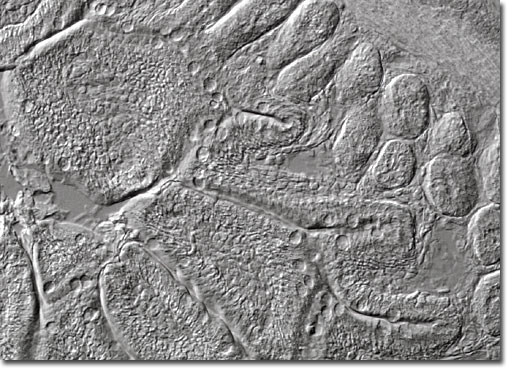|
In humans, the most prominent structure of the digestive system is the small intestine, which is generally more than 20 feet long. In nonhuman primates, however, the large intestine is a more central component to the digestive process. This divergence between humans and creatures such as gorillas and orangutans reflects the vast differences in their diets. As omnivores, humans generally consume high quality foods that contain significant amounts of protein, fats, and carbohydrates. The slower moving, nonhuman vegetarian primates, however, eat lower quality plants that contain a higher proportion of roughage.
|
